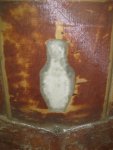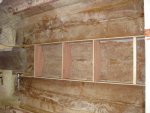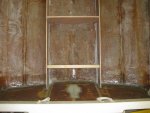Hello guys,
Thanks for all the advice on the transom keyhole.
Our transom wood went in the boat yesterday and I have to say that i was way more stressfull than anticipated.
The room temp was quite low (18°C) and we mixed the poly on the low side to get more time but we had to do 3 different batches to glue it in and it was barely enough.
We started with a dry fit to ensure that nothing gets in the way once glued.
we trimmed again the keyhole and rounded off the edges. The little pieces that we glued back in place from the wrong keyhole cute is holding strong, you can hardly notice the seam on the side
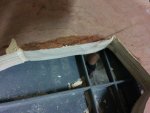
We also waterproofed the back side for added peace of mind with a layer of CSM. This part went very well.
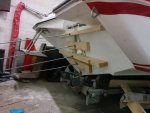
We din't get the glue squirt all around that I was expecting, we should probably have put more glue on the piece of wood for that.
Altough I'm quite sure that the center section is correctly filled I think that the 2 side portion may have had a little bit more glue on them.
We will see how it sound with the clamps off as it was difficult to assess it with the woods in the way.
I also checked the outer skin flatness after clamping and it is way better than when the hull was without wood I believe it will be within spec.
If I had to do it again I would:
- put more glue on both side
- add a long clamping wood to increase the pressure on the side parts
- probably add more thickness on the side clamps between the 2x4s and the piece of wood to add more pressure on the side as it is difficult to get clampage there with only a center screw pulling on the woods.
For those who will read this before doing their transom I would like to stress that preparation is the key, don't take shortcuts and recheck it twice if needed, once the poly resin is in, the clock will be ticking...

















